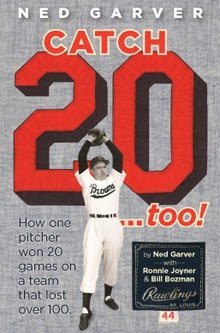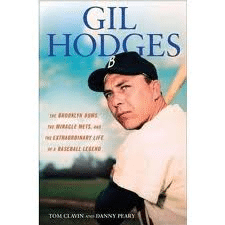Ned Garver remains a winner.
Carl Erskine
New Gil Hodges Book Defies The Odds
I wouldn’t have tried such a feat, but I’m glad they did.
A tip of the collector cap to authors Tom Clavin and Danny Peary, the brave souls behind Gil Hodges: The Brooklyn Bums, The Miracle Mets, and the Extraordinary Life of a Baseball Legend (New American Library/Penguin Books, $26.95).
The authors interviewed 130 people to reconstruct the biography of Hodges, who wasn’t the most talkative man of his baseball generation. While Clavin and Peary quote from published work, they discovered quickly that reporters couldn’t count on Hodges for Casey Stengel-like quips or fiery criticisms of players.
Nevertheless, the book is a winner in showing Hodges as baseball’s heroic “Quiet Man.”
One fan, a 1950s teen, told the authors of the “John Wayne aura” that Hodges radiated, while saluting the Brooklyn first sacker for signing autographs and chatting with fans after games.
A seven-year-girl in the midst of a six-month stay in the hospital’s local polio ward remembered Hodges. When the kids sang Take Me Out to the Ballgame when the Dodgers came to visit, he scooped up the girl and danced with her when she shouted “Dodgers!” during the song. “Sixty years later, I remember that. I needed the hug Gil gave me when we danced.”
Teammate Carl Erskine talked about how Hodges would blow kisses to his wife after home runs. It seems she coached him out of a 1950 batting slump. Amazingly, Erskine mentions a few pages later that the first baseman’s savvy side — how he would rub up the game ball with a bit of pine tar during games to give his fellow Indiana native an advantage on the hill.
Credit Joan Hodges for sharing lots of personal memories of the spouse who died in 1972 on the golf course, just shy of his 48th birthday. Die-hard fans may have inklings of all Hodges did as a Dodger, Senator and Met. However, knowing him as a husband and father help paint a complete picture of this admirable individual.
Meanwhile, authors Clavin and Peary are impressive in their sincere pitch to get Hodges another look with Hall of Fame voters. Give their book a look, and you may agree.
Coming Monday: The place-based advantage most TTM collectors overlook.
Frustrated Collectors Forget Valentine’s Day!
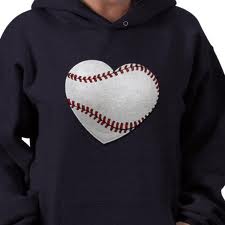 |
| Autograph collectors, have a heart! Get yours at the zazzle website! |
Are you overwhelmed by all the Valentine’s Day cards in stores?
How many cards (if any) will you send? Not give, but send! One for your parents?
Don’t worry, I’m not working for Hallmark. I just wanted the chance to illustrate how overwhelming fan mail might seem every week for the average retired baseball player.
I see the complaints yearly:
1. He switched (or kept) my good card for a poor condition common.
2. He used ballpoint when I wanted Sharpie (or vice versa).
3. He didn’t get my personalization right.
4. He didn’t add the inscription I asked for.
No, it’s not fair, nor fun, to get such a letdown in your envelope. I don’t think it’s on purpose much of the time. In the past year, I’ve posted comments from Bobby Doerr, Carl Erskine and Virgil Trucks telling about getting quantities of mail DAILY.
If you’re paying a fee for the autograph, then you’re purchasing a product. See that you’re getting your money’s worth. However, the service of a free response doesn’t come with a guarantee. Almost all the willing signers have great batting averages, giving collectors what they want. They get my admiration and thanks.
Dodger Carl Erskine Honors Fans Daily
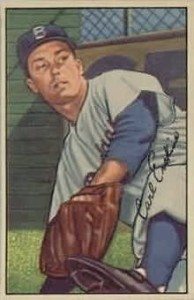 |
| Pitch-perfect penmanship, even in his 80s! |
Where have all the Carl Erskines gone?
I don’t mean fellow Brooklyn Dodgers. I mean baseball AMBASSADORS. Retired? I don’t think so. Every day of the year, he’s honoring and thanking fans and collectors.
I asked “Oisk” about his feelings about autographs. Here’s his inspiring reply:
“I usually receive eight or ten letters on the average each day. I try to answer right away, because when I can’t, they pile up.
I do them all myself and read each one. I consider fans the backbone of the game — and I consider signing an extension of my career.”
Who writes? What do they say in their letters?
“When I read these requests, they range from fans who saw us play, young fans who have read about us, men in prison writing for their own kids — birthdays, anniversaries, etc.
I just can’t throw these requests away.”
How can we thank this Dodger hero?
“I was once interviewed by Baseball Collectors Digest. I said I don’t charge for signing, but ask they [collectors] help Special Olympics if they/you can. Now, I often get 5 dollars, a check for $10 to $25 to help our local Special Olympics.”
Erskine closed with a message to other major leaguers, past and present:
“I’m bothered by players who, or their agents, restrict their signing to make their autograph more valuable.
That’s an insult to the fan base that made their autograph sought after.
Carl Erskine”
Coming Monday: What did catcher Mike Piazza tell Turk Wendell when he went to the mound?
Writing to Dodger Pitcher Carl Erskine: Time To Thank This Tireless Autograph All-Star
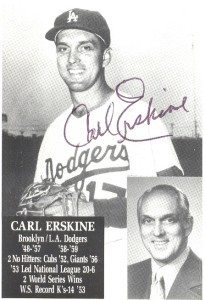 |
| Often willing to provide answers to anything fans ask, Erskine even adds a signed gift to most replies! |
What’s right about the autograph hobby?
Yesterday, I indulged in a rubber-stamping rant. Today, equal time is required.
There are still kind, grateful men from baseball’s past. They aren’t all from the 1940s and ’50s. I discovered a heart-warming story about Giants pitcher Phil Nastu (1978-80) going above and beyond to fulfill a TTM autograph request. I’m hoping to salute him, getting details of why he’d be so dedicated to an unknown collector.
Other names on the latest batch of envelopes launched from BBTL-land:
Bobby Doerr
Boo Ferriss
Carl Erskine
I wanted to send a standing ovation to each of these three signers, too. Each of these men have decades of autograph heroics on Mr. Nastu. Along with saying thanks, I’ve just wanted to ask about their fan mail volume, why they keep delighting everyone who writes, and what we can do to thank them.
I saw on http://www.sportscollectors.net/ that Bob Wiesler and Fred Caligiuri had answered questions for other collectors.
I gasped at the lengthy post-baseball musical career of Dick Adams, a member of the 1947 Philadelphia Athletics. Likewise, I’m stunned at the many charity initiatives of Brewers bullpen catcher Marcus Hanel. I wanted to find out how baseball has inspired each.
I found a recent newspaper profile of pitcher Turk Wendell. I wanted to make sure he had a copy. Also, I’m hoping he’ll explain a couple of his mystical comments from that feature.
Lastly, I realized that former Angels and A’s manager Bobby Winkles may have grown up in the shadow of a Hall of Famer. I’m seeking details.
There’s the game plan behind my latest batch of fan mail. Stay tuned for updates. Meanwhile, I hope you find as many reasons to add names to your want list.
Thursday: Inspiration from Japan.

